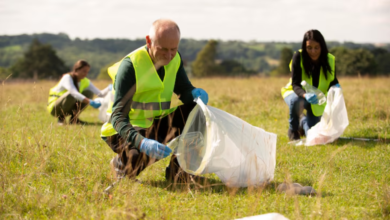Scrum, Remote Teams and Success: Five Ways to Have All Three

Remote teams are reshaping how work gets done, but success does not happen by accident. To truly thrive, teams need more than just good intentions. They need structure, adaptability, and the right mindset. That is where a Scrum Master Certification can become transformative, offering the expertise to manage people and projects across distances. When paired with powerful Scrum Tools, Scrum principles can drive collaboration, focus, and results even when teams are spread worldwide. Curious how you can align Scrum, remote work, and success? Let us dive into five practical ways to make it happen.
Practical Ways to Align Scrum, Remote Teams, and Success
Bringing Scrum practices and remote teamwork is the key to achieving lasting success. Below are five practical ways to make it happen with confidence and clarity:
1. Understand the Core of Scrum in a Remote Setting
The foundation of Scrum is teamwork, communication, and fast adaptation. These values require much more consideration to remain effective in a remote setting. Each team member needs to know what a ceremony is and why it is important. Everyone stays focused on their objectives through a brief sprint planning meeting, a thorough backlog grooming session, or an unambiguous sprint review.
Without in-person interaction, minor miscommunications can quickly escalate into more serious problems. Setting expectations and providing clear explanations are essential. For clarification, people no longer have the luxury of strolling to a colleague’s desk. The success of remote Scrum is based on clear roles and robust communication mechanisms. If you are clear, you will have fewer issues during a sprint.
See also: Unlocking the Power of SEO for Business Growth
2. Make Daily Standups Short, Sharp, and Focused
If not handled properly, remote meetings can easily become endless video conferences. Daily standups need to deviate from that trend and remain unique. They should last no more than fifteen minutes and be brief, incisive, and intensely focused. Each team member should address three fundamental questions: What did I do yesterday? What am I going to do today? Are there any obstacles? Following these guidelines helps to keep discussions on topic and free of extraneous details.
Standups serve as team coordination points rather than status updates for management. Standups will fuel the day rather than deplete it if everyone adheres to the format. To get to the point, encourage team members to prepare in advance. Always be considerate of others’ time and establish a daily routine that promotes clarity and positivity.
3. Use Scrum Tools That Everyone Trust
Effective scrum tools can make or break a remote team’s productivity. Select tools that are dependable, user-friendly, and available to all. Asana, Jira, and Trello are excellent tools for visualising work across sprints. Slack and Microsoft Teams are two platforms that facilitate instantaneous and structured communication. Use a single tool for each task to prevent the team from overloading with apps.
Verify that each team member feels at ease using the selected tools. If necessary, provide training or brief demonstrations, particularly for recent hires. With the correct scrum tools, the sprint cycle becomes more transparent, engagement increases, and confusion is decreased. The team works more quickly and feels closer when everyone can see the goals, developments, and obstacles.
4. Celebrate Small Wins Often
In remote teams, project deadlines can quickly cause festivities to be ignored. But little victories are worth enormous praise and should never be undervalued. Has anyone finished a difficult user narrative before the deadline? Give it a little shoutout in the team chat to celebrate. Was a sprint goal smashed by the team? Give each other a virtual high five when you do your next standup. After each sprint, you can plan brief “win sessions” to showcase accomplishments.
These small events establish enduring emotional bonds. They lessen the loneliness that distant employees frequently experience and help maintain strong motivation. Even when great distances separate people, a strong sense of teamwork is eventually developed by celebrating little victories. A content and valued crew produces better results, sprint after sprint.
5. Keep Retrospectives Honest and Actionable
Scrum main source of improvement is sprint retrospectives. Remote teams need more open, sincere, and goal-oriented meetings. Establish a secure environment where criticism is appreciated, acknowledged, and embraced. Before getting into feedback, start with an icebreaker to get everyone on the team comfortable. Encourage everyone to voice their opinions, even if they are minor irritations. Instead of placing blame, concentrate on coming up with solutions.
After each session, identify specific areas for improvement to make retrospectives actionable. During the subsequent sprint planning, assign owners to these action items and monitor their progress. Teams’ trust, engagement, and performance all increase when they see their input implemented.
Conclusion
Blending Scrum, remote teamwork, and success is not a mystery. It comes from mastering the basics, using the right scrum tools, and strengthening the human connection. If you are serious about leading remote teams effectively, consider taking a Scrum Master Certification. It equips you with real-world techniques you can apply immediately. The Knowledge Academy offers expert-led courses that can sharpen your skills and set you up for lasting success in the agile world.




